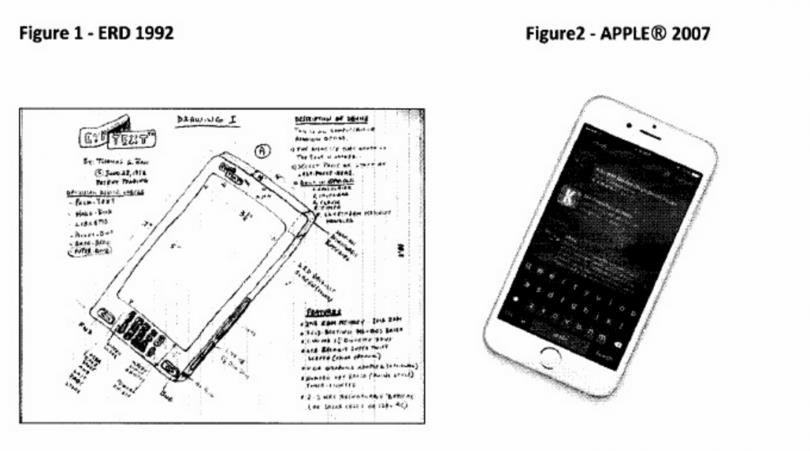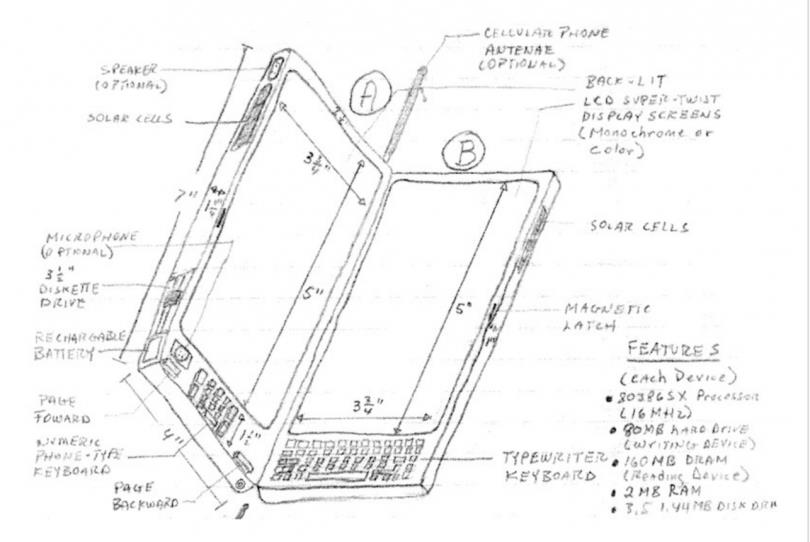June 29, 2016
Apple is the biggest company in the world and with that comes its own set of problems. For example, generating over $50 billion in revenue in a single quarter is seen as a disappointment on Wall Street.

June 29, 2016
Apple is the biggest company in the world and with that comes its own set of problems. For example, generating over $50 billion in revenue in a single quarter is seen as a disappointment on Wall Street.

It also means that you become a target for lawsuits of all kinds — both serious and spurious. While a court is yet to rule on it, a Florida man claiming $10 billion because he essentially invented the iPhone, iPod and iPad likely falls into the latter category.
Florida resident Thomas S. Ross filed a lawsuit against Apple this week claiming that a series of three drawings he made between 1992 and 1995 of an "electronic reading device" proves he came up with the ideas that would, 15 years later, see Apple launch the iPhone, iPod touch and the iPad.
The device outlined in the three hand drawn schematics includes dual rectangular panels with a touchscreen, cellular connectivity, internal and external storage and photo and video browsing — all things which would eventually be incorporated into smartphones.

Florida Southern District Court A Florida man claims the iPhone, iPad and iPod infringe upon his invention of an "electronic reading device" (pictured above left) which he drew in the early 1990s.
There are some other aspects, however, which were never incorporated into most smartphones including a folding, dual-screen design, solar charging panels and a 3.5-inch diskette slot.
While Ross did initially file the drawings with the U.S. Patent and Trademark Office in November 1992 seeking a utility patent, because he failed to pay the required fees, the regulator declared the filing abandoned in 1995. Ross subsequently sought retroactive protection in 2014 filing the drawings with the U.S. Copyright Office. As well as the minimum payout of $10 billion, Ross is seeking a 1.5 percent royalty on infringing products.

One of Thomas Ross' drawings for his "electronic reading device" which he invented in the early 1990s.
The following is an extract from the court filing:
What Ross contemplated, was a device that could allow one to read stories, novels, news articles, as well as look at pictures, watch video presentations, or even movies, on a flat touch-screen that was back-lit. He further imagined that it could include communication functions, such as a phone and a modem, input/output capability, so as to allow the user to write notes, and be capable of storing reading and writing material utilizing internal and external storage media. He also imagined that the device would have batteries and even be equipped with solar panels.







































































































